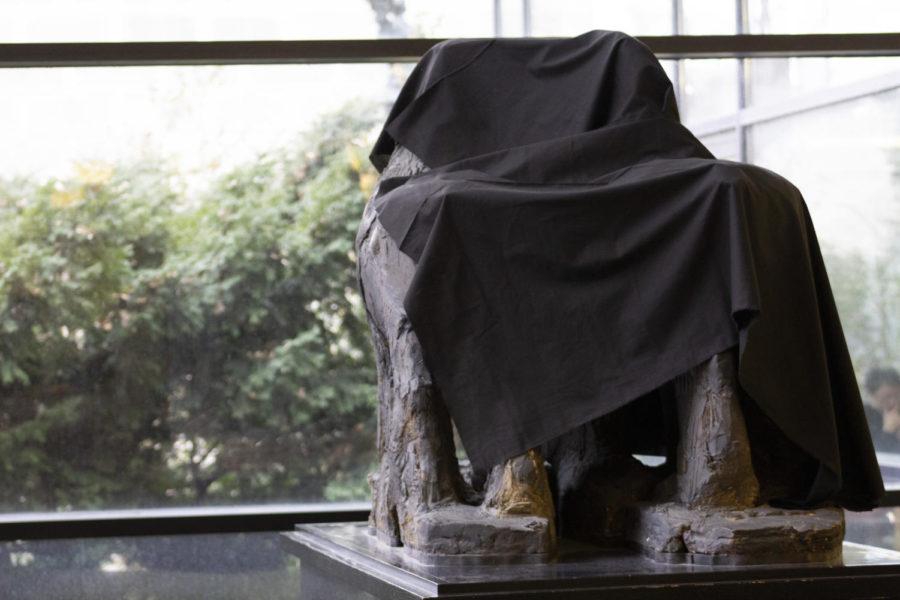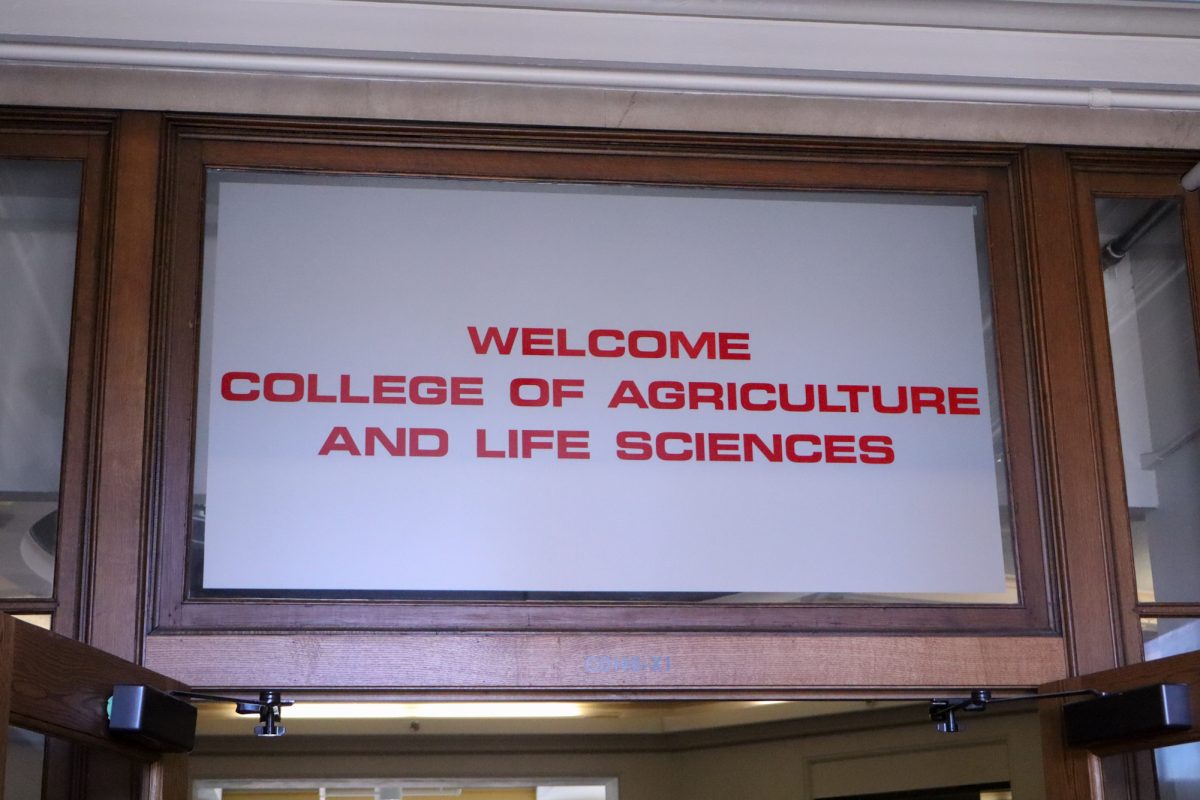Day Without Art 29th anniversary raises awareness about HIV/AIDS
Day Without Art is one of the events hosted by the Global Health and AIDS Coalition for World AIDS Week on campus. The event consists of covering up art pieces to mourn the loss of people who have died from HIV or AIDS.
November 29, 2018
Around the world people come together to mourn losses on World AIDS Day. World AIDS Day and Day Without Art take place annually on Dec.1. Both days are used as a way for people to mourn the losses they have had this year due to AIDS/HIV and look toward the future.
World AIDS day was founded in 1988, as the first ever global health day according to the World AIDS Day website, with Day Without Art being founded in 1989. Saturday, Dec. 1, will be the 30th anniversary of World AIDS Day and the 29th anniversary of Day Without Art.
Globally there are an estimated 36.9 million people worldwide living with HIV/AIDS as of 2017, according to HIV.gov, with more than 1.1 million living in the United States.
“Gay, bisexual, and other men who have sex with men bear the greatest burden by risk group, representing an estimated 26,200 of these new HIV infections,” according to HIV.gov.
The virus was only discovered 34 years ago in 1984, but it has killed more than 35 million people,according to World AIDS Day.
World AIDS Day and Day Without Art were created to draw attention to these people who were being ignored.
“More than 800 arts organizations, museums and galleries throughout the U.S. participated [in the first Day Without Art] by shrouding artworks and replacing them with information about HIV and safer sex, locking their doors or dimming their lights, and producing exhibitions, programs, readings, memorials, rituals, and performances,” according to Day Without Art.
At Iowa State, Day Without Art was held on the Wednesday before the actual day in order to get more traffic through the event.
The sculpture “Shoulders of Giants,” the clay horses sculpted by Nina Ward on the first floor of Parks Library, was covered with a black cloth as part of the event. Red ribbons, symbolizing the solidarity of people living with HIV/AIDS, were handed out to passers-by.
“In 1991, a decade after the emergence of HIV, twelve artists gathered in a gallery in New York’s East Village,” according to the World AIDS Day website. “They had met to discuss a new project for Visual Aids, a New York HIV-awareness arts organisation. It was there that they came up with what would become one of the most recognised symbols of the decade: the red ribbon, worn to signify awareness and support for people living with HIV.”
The group wanted to stay away from colors associated with the LGBTQIA+ community, like pink and rainbow, so they chose red “for its boldness, and for its symbolic associations with passion, the heart and love,” according to the World AIDS Day website, and because the color didn’t signify just one group or people.
“I feel like the location of the sculpture that we covered has caused more people to slow down and look, it has definitely made a lot of people look and think about what is going on,” said Jacob Bliss, president of the ISU Global Health and AIDS Coalition.
This is the second year this event has taken place at Iowa State, with Ward’s sculpture being covered both times and other art pieces being covered the previous year.
“Visibility is important. Commemoration of events like Day Without Art, which brings attention to the crisis of HIV/AIDS and to those who live with it, is important,” said nicci port, project director for Diversity & Inclusion and LGBTQ+ Initiatives. “Creating a space that allows those who don’t know how HIV/AIDS impacts them to pause and learn something more is important. Day Without Art should also serve as a reminder to those who don’t live in that reality that they are not invulnerable to it.”
Across the United States and through the years since Day Without Art was founded by Visual AIDS, it has initiated numerous projects. These projects include the dimming of the New York skylight, the distribution of copyright-free text and images and a nationwide outdoor slide projection with text and images, according to Day Without Art.
Visual AIDS uses a lot of posters, videos, and other art pieces created specifically for their organization by affiliated artists to raise awareness about the subject of HIV/AIDS.
A way the Iowa State community can show support for World AIDS Day is “by wearing an HIV awareness red ribbon on the day” according to World AIDS Day.
“Whether it impacts us personally, as a community, or the people we love, we need to find our motivation to join the movement to end HIV/AIDS beyond Day Without Art and World AIDS Day,” port said.







